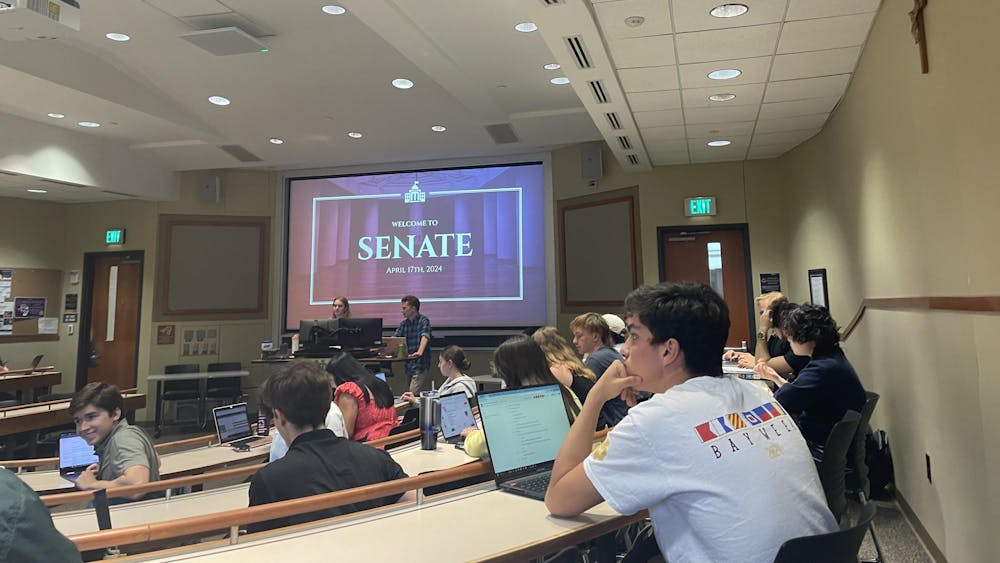Professor Desiree Martin, an assistant professor of English at the University of California, Davis, spoke Thursday in the Hesburgh Center Auditorium about the growing following of La Santa Muerte, a skeletal Central American folk figure whose name translates to Saint Death, in a talk called “Borderlands Saints: Reflections on Secular Sanctity and La Santa Muerta.”
“It [the current version of the following] dates from roughly the early eighties, and it kind of really gained steam in the mid-nineties during the Mexican peso crisis of 1994”, Martin said. “The origin of Santa Muerte that goes further back — there is no consensus on when belief in Santa Muerte first arose. … She is sometimes linked to Saint Paschal Baylon [a Spanish Friar and Catholic Saint from the mid to late 1590’s], and she’s linked to a saint in France who appears as a skeletal figure and another saint from Oaxaca who looks like a skeleton, so there is no real consensus, but probably the roots are pre-colonial as there are indigenous gods that match their beliefs and take a skeletal form.”
Martin said Santa Muerte controversially highlights a contemporary symbol of secular sanctity, where a profane figure is worshipped in a way that is not unlike the worship of a sacred figure.
“Since Santa Muerte is so strongly associated with the profane, especially in relation to illegality or transgressivity, she is a particularly extreme example of the collision between the secular and the sacred. Santa Muerte is famous for being very miraculous and loyal but also for being a jealous, vengeful patron who requires the utmost devotion and respect,” Martin said. “Santa Muerte is not venerated for her purity but for her accessibility and for her resistance to the powerful forces of the state, the Catholic Church and wealthy elites.”
Matin said the exchange at the heart of devotees’ interaction and relationship with Santa Muerte, however, highlights a darker aspect of the relationship between worshipper and figure. Martin showed clips from Eva Aridjis’s 2007 documentary “La Santa Muerte,” which depicted a woman praising Santa Muerte while in prison.
“This woman, who paints murals and images of Santa Muerte for her fellow inmates, situates her art as both offering and commodity. She also openly identifies the death saint as both a provider and a guardian for her drug habit,” Martin said. “The woman seems neither to expect judgment of nor deliverance from her drug habit. Instead, she considers Santa Muerte a friend and companion who will not only protect her from an overdose, but will stay by her side as she gets high, perhaps implicitly participating in her illicit journey.”
Martin says the ambivalent and two-faced nature of Santa Muerte is inherently contradictory, leading to her image as a disruptor of class, racial, gender and sexual hierarchies being downplayed in favor of an intimidating image of the pagan, the Satanic, or the criminal.
“In reality, Santa Muerte threatens her critics because she helps her marginalized devotees, especially migrants, poor barrio residents, and most contentiously, criminals,” she said. “But for the majority of devotees, Santa Muerte’s dark side is not exclusively or even primarily linked to the criminal underworld. Instead, it manifests through the Death Saint’s purported jealousy and the price she supposedly exacts from believers who use her powers recklessly or who fail to pay her proper tribute.”













